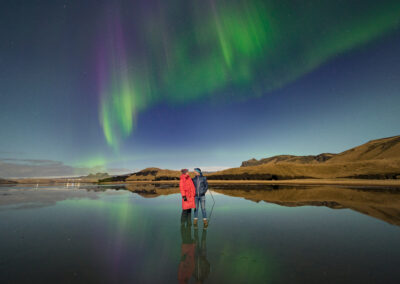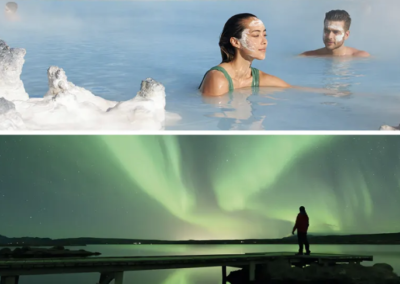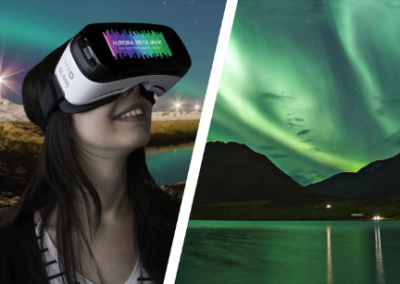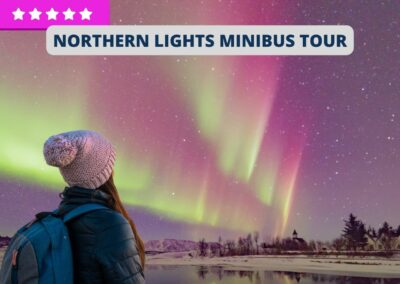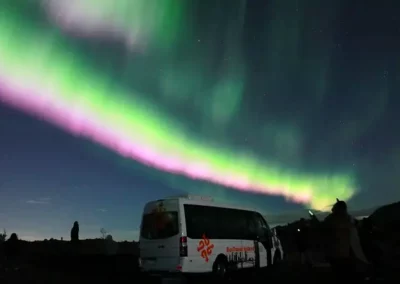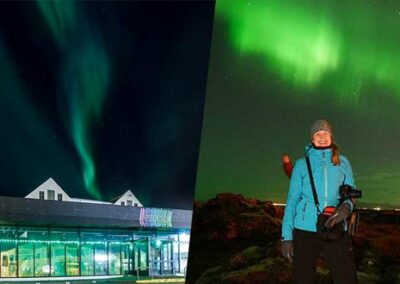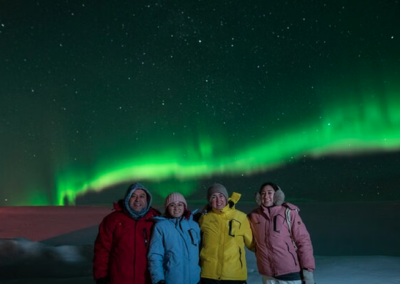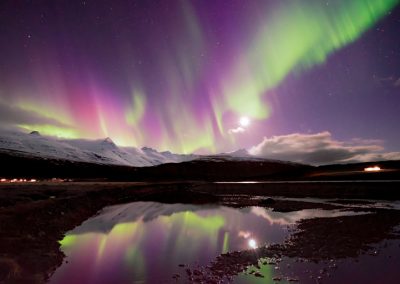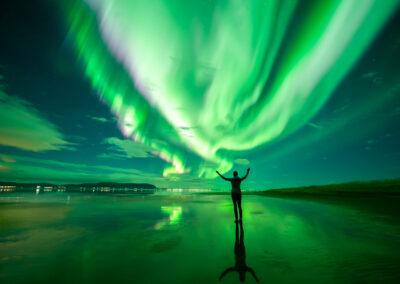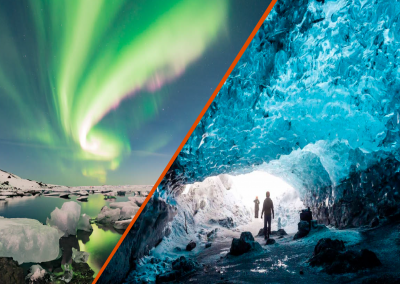Extremely rare “blood aurora” dancing over Iceland last weekend
At 21.40 PM local time on Friday, Jan 13th 20223, people in Iceland witnessed an extremely rare phenomenon: The so called “blood aurora”, strong red auroral displays clearly visible to the bare eyes.
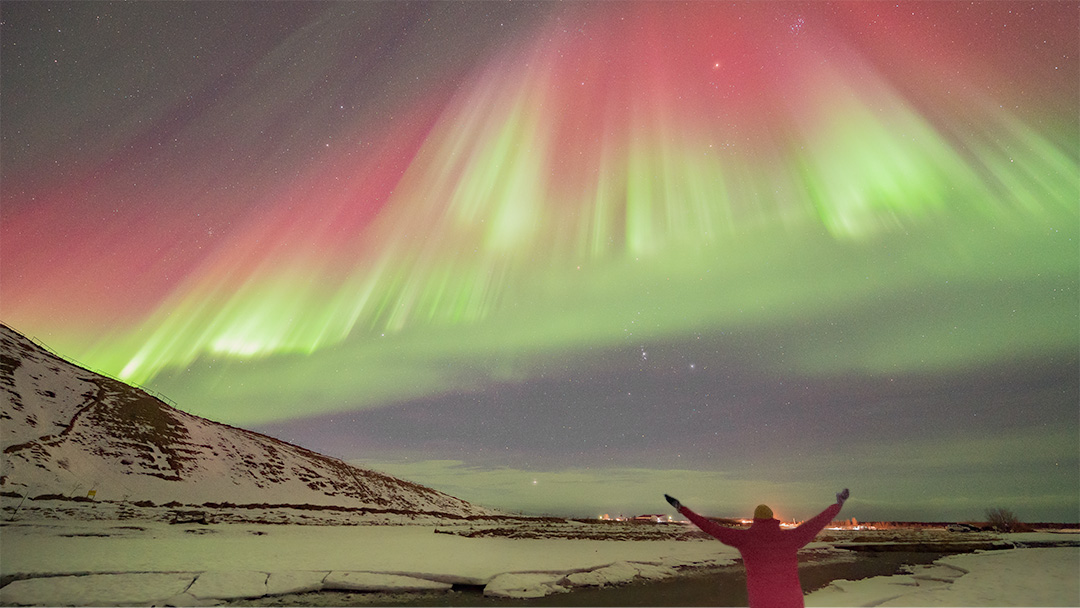
Red auroras are called blood auroras.
“The KP index was low that night, and the south shore of Iceland very windy,” says Grétar Jónsson, founder and owner of Aurora Reykjavik, the Northern lights Center of Iceland. “But we expected clear skies, so we decided to head out. Our first stop was Skógafoss, and we realized immediately that this night was going to be somewhat special. Although not yet visible for the bare eyes, the camera sensors already showed some rare colors, like purple and blue strikes above the visible green bands. We set up our timelapse towards the waterfall and waited. Then, suddenly, a blood red curtain in the sky grew and lengthened, spanning from east to west in very rare southern direction! The glow got more and more intense. We were screaming, throwing around our cameras, still in timelapse-mode, and being shocked for a second. Pillars of red streaked down like blood dripping from heavens, and got so intense, that the whole surrounding got lit up.
After a few seconds, the show was over, leaving us in aww, all in doubt of what had just happened.
Despite more than 1000 nights of aurora chasing, we have only seen once a blood aurora before – 28th of February 2014, when we reached the last solar maximum.
Now we’re heading towards the next on, expecting it to peak in 2025 – so chances are good to see more of them in the months to come.”
What are blood auroras?
The aurora is caused by charged particles in the solar wind that collide with charged particles in our atmosphere. The collision produces light in the visible spectrum.
At different altitudes, different gases can be found and their concentrations vary, so that depending on the altitude and elements involved, different colors will result from the collision with the solar particles.
The strong, green lights most typically associated with an Aurora display originate at altitudes of 75 to 110 miles – the average high of the northern lights -, and mainly involve oxygen. Green is not only the most frequent color of the Aurora, it is also the one our eyes can see best, so it is no wonder that the northern lights are often thought to appear in green only!
Oxygen is also responsible for the red northern lights which occur at higher altitudes, generally above 125 miles. At this height, oxygen is less concentrated and is excited at a higher wavelength, making red visible.
During exceptionally intense geomagnetic storms, an above average number of solar particles often manage to escape our magnetic shield, and the glow produced can be so intense and diffuse that the whole sky turns red. This is an extremely rare occurrence.
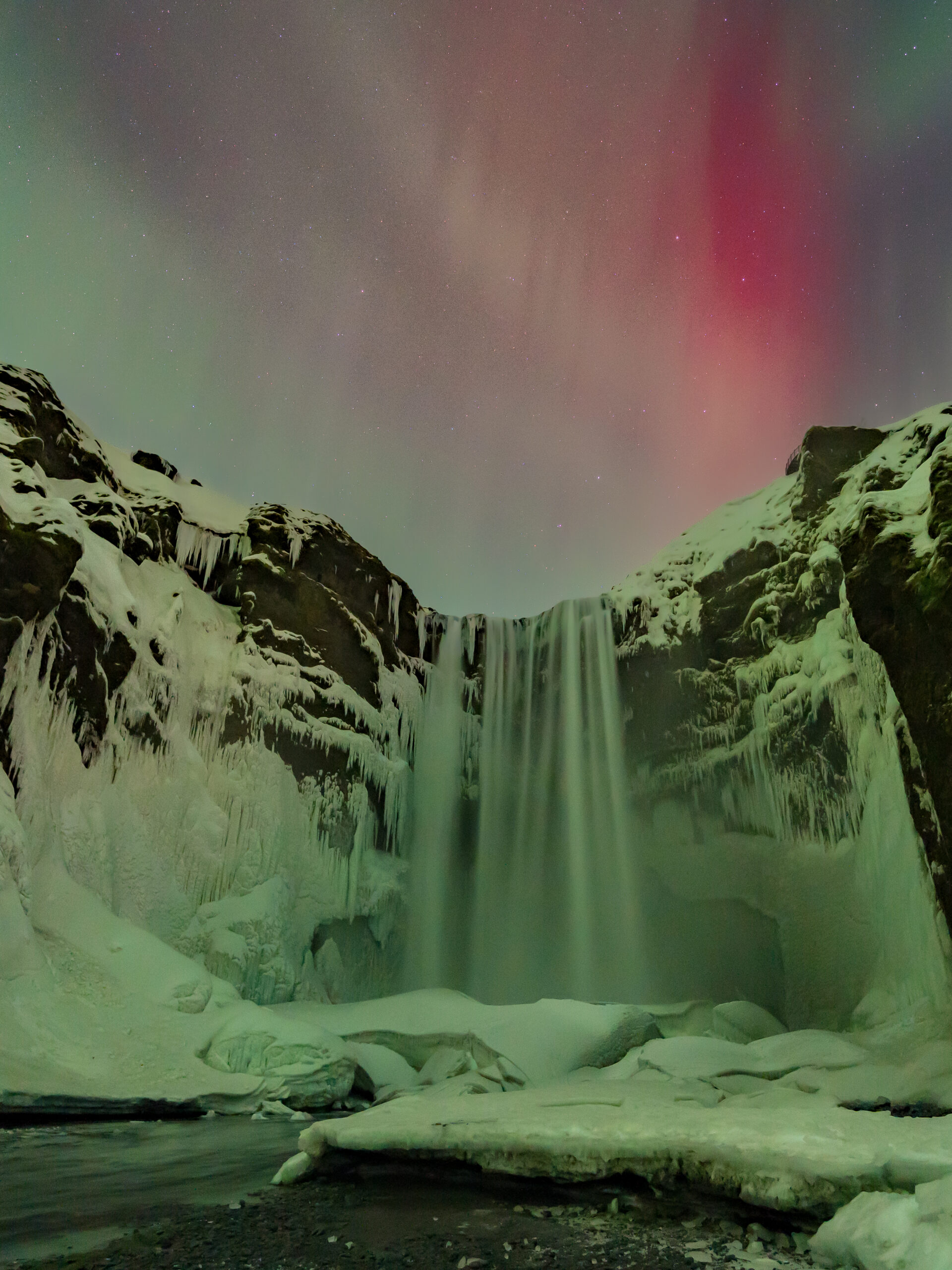
Blood aurora at Skógafoss, Iceland

A few minutes later, red strikes even occurred straight above Skógafoss
Why the rare ‘blood aurora’ inspires wonder – and foreboding
Auroral displays are most often seen in the arctic regions, under the so called auroral oval, but can occanisionally span out as south as central Europe or continental America.
Stories from these regions have been formed for millennials, though a few of them are as recent as the 1800’s. Many say that people in Western Europe considered the northern lights to be a warning, or a bad omen signaling oncoming hardship.
A sighting of the aurora could mean plague, death, or war.
Aurorae are said to have foretold the death of Julius Caesar (44 BCE) and predicted the American Civil War (1860), and the French Revolution.
Even in recent times, series 2 of Fortitude , a popular TV series set in a fictional town in Arctic Norway, started of with the blood aurora.
Will we witness more blood auroras?
The Sun appears to have a cycle of about 11 years during which it waxes and wanes, from solar minimum to solar maximum. Its activity is measured by the number of sunspots on its surface, which have been counted each day since 1755.
We’re now in Solar Cycle 25, which began in December 2019 when, in retrospect, solar scientists were able to tell the moment of solar minimum. According to NASA, solar maximum is predicted to occur midway through Solar Cycle 25, so between November 2024 and March 2026—and most likely July 2025.
Solar events will continue to increase as we near solar maximum in 2025, making blood aurora events more likely to happen in the months to come.
However, with a scientific explanation for their occurrence, nowadays aurora chasers around the globe don’t fear the blood aurora any longer, rather than enjoying witnessing such a rare – and beautiful – phenomenon.
So, if you can – buy the ticket, get the ride. You will find our hand-picked selection of tours here!
Would you like to know more about Northern Lights hunting in Iceland? Find our ultimate guide here!






